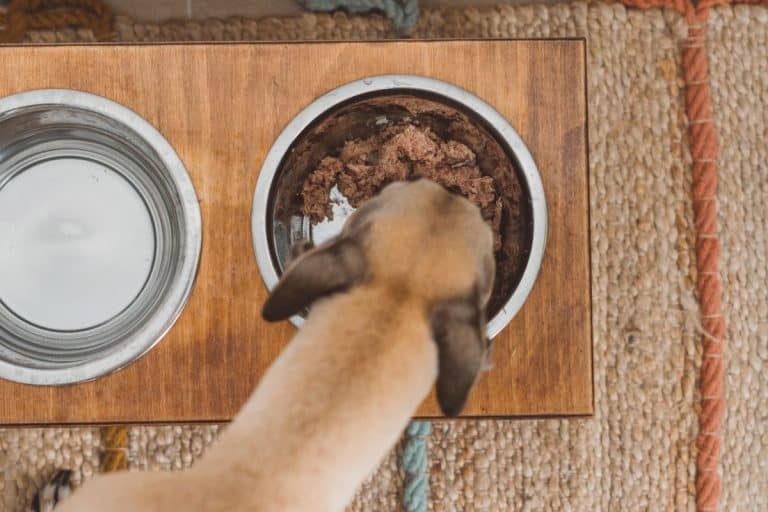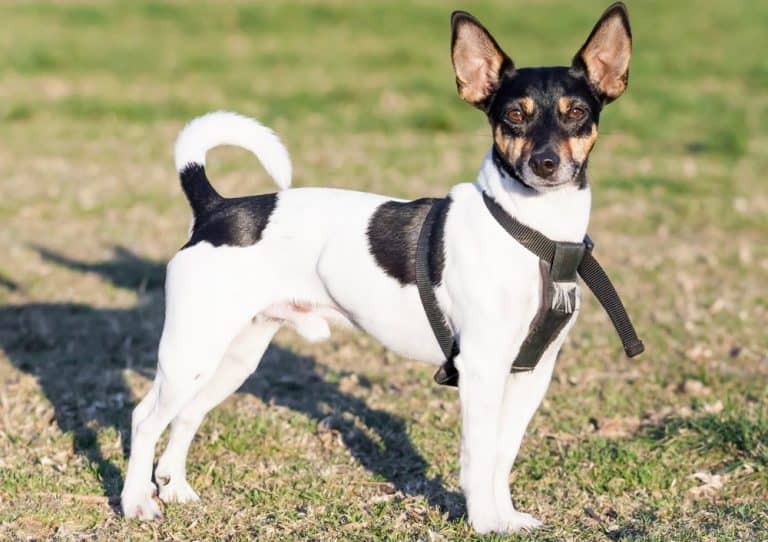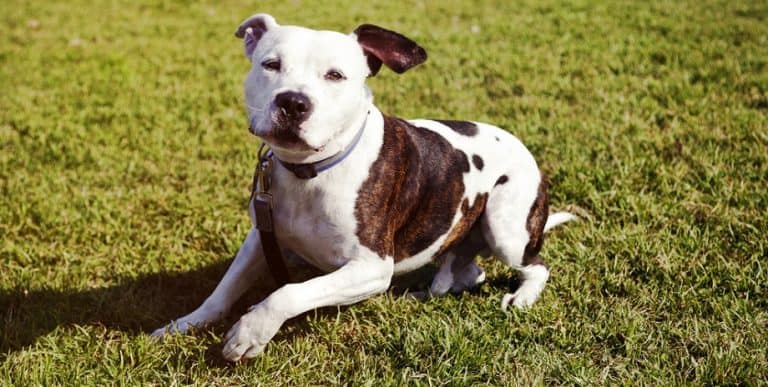Pug Growth Chart (Weight & Size Chart) – How Big Do Pugs Get?
When raising a Pug, you need to consider their weight throughout the different stages of their life. Knowing what to expect from a Pug growth chart will prepare you in providing them whatever they need to grow healthy and strong.
Normally, Pugs reach their adult size at the age of around nine months to one year where they stand at a height of about 10 to 14 inches and weigh around 13 to 20 pounds.
This article will provide you with more information on what to expect as your Pug grows, the factors that affect their growth, and many more!
When Do Pugs Stop Growing?

A common question asked by pug owners is when will the puppy stop growing? Since pugs are a small breed of dog, their transformation from puppy to adult might not be as dramatic as a large breed dog, but they still do grow.
Normally, pug puppies should be at their adult size by the time they are 9 months old. Some puppies may continue to put on weight up to 12 months, so by a year, the vast majority of pugs will be at their adult size and weight, though it is still possible for your pug to gain a little more weight beyond the 12-month mark.
Pug Weight Chart
The Pug weight chart below will help give you an idea of how much your puppy should weigh as he gets bigger.
It is important to remember that the chart is based on averages and just like with humans, pugs do come in sizes that are not on the chart.
Weight can also vary depending on diet, exercise, sex, and even just slight breed differences from dog to dog.
If your dog’s weight is not represented on the chart, it would be best to consult with your veterinarian to find out whether there is any cause for concern.
Pug Puppy Weight Chart
| Age | Average lb | Average kg |
|---|---|---|
| 8 Weeks | 4.0 lbs | 1.8 kg |
| 10 Weeks | 5.0 lbs | 2.3 kg |
| 12 Weeks | 6.0 lbs | 2.7 kg |
| 15 Weeks | 7.5 lbs | 3.4 kg |
| 6 Months | 12.0 lbs | 5.5 kg |
| 7 Months | 15.0 lbs | 6.8 kg |
| 8 Months | 17.5 lbs | 8.0 kg |
| Adult | 18-20 lbs | 8.0-9.0 kg |
When looking at the chart, you will see the pup’s age in one column and the average weight for a dog at that age in another column.
Generally, to figure out an estimate for your dog’s ideal adult weight, you can take your puppy’s weight in pounds and divide it by his age in weeks.
Then, multiply that number by 52, since there are 52 weeks in a year. This is still just an estimate, but it can help you guess how much bigger your puppy might get.
An easier method is when you know your pup’s weight at 6 weeks old. Then, you just double the weight and double it a second time to get the ideal weight.
Pug Growth Chart – What To Expect

Birth – 2 Weeks
Since pugs are a small breed, they will not weigh much at birth, but their body weight should double within the first week or so. Their daily weight gain should be about 5%.
They grow quickly in the beginning. Puppies will be blind, deaf, and toothless at this stage of life. Their mother will nurse them exclusively and they will sleep a lot as they are continuing to grow quickly.
3 Weeks – 12 Weeks
By 3 weeks old, your pug puppies should perk up and become more interactive. They will play and explore more.They will begin to develop some control over their bladder, so they should be able to leave their bed to pee and poop.
They can start house training by 8 weeks and begin to learn commands at around 9 weeks. Weight-wise, your pug should be somewhere around 6 pounds by 12 weeks.
3 Months – 4 Months

By 4 months of age, your pug can weigh anywhere from 5 to 8 pounds.You will notice that your puppy has started teething, which not only means that your puppy will be losing teeth, but also that your puppy is going to be chewing on anything that he can get his mouth on.
It is important to have safe, chewable toys easily accessible in order to prevent your puppy from becoming destructive.
4 Months – 6 Month
Your training work should be continuing between 4 and 6 months of age. Your puppy should know to come when called and any other basic commands that you will wish to use.
You are the main influencer over your pup. By 6 months old, your pug should weigh somewhere between 7 and 12 pounds. If your puppy is bigger than that, do not worry; dogs all grow at different speeds.
6 Months – 9 Month
By the time that your pug is 9 months old, he should be approaching his final adult size. Even though he is likely to gain a little more weight after 9 months, he should already weigh 19 pounds, remembering that some dogs are slightly bigger or smaller.
Your puppy should be finished teething by this point. You will need to keep your puppy well-exercised to help keep him as healthy as possible.
Adult
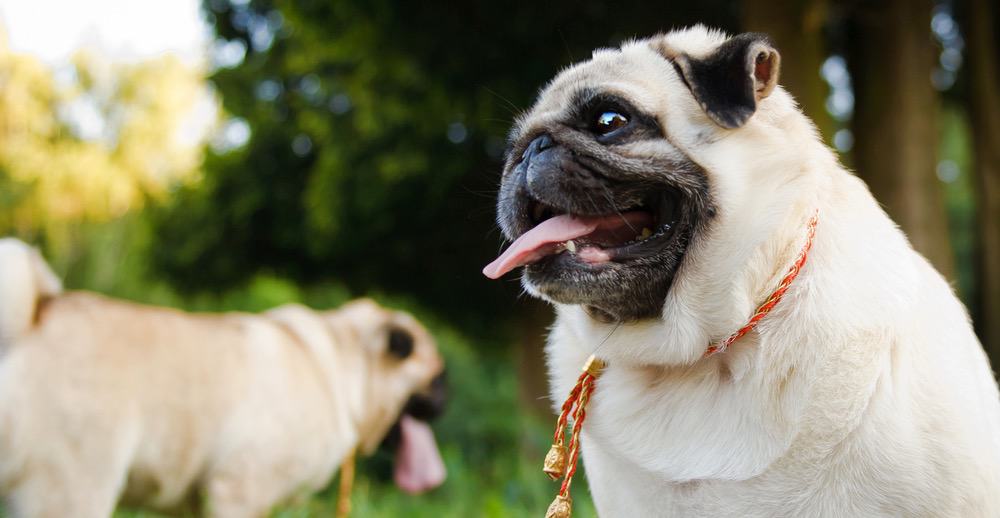
An adult pug’s final weight will greatly depend on whether your pug is male or female, the amount of exercise that he receives, and the type of food that he is eating.
That said, an adult pug can weigh anywhere from 13 to over 20 pounds. If your pug is over 22 pounds, you should consult with your vet to make sure it is a healthy weight. Since they are small dogs, even a pound or two matters.
How Big Do Pugs Get?
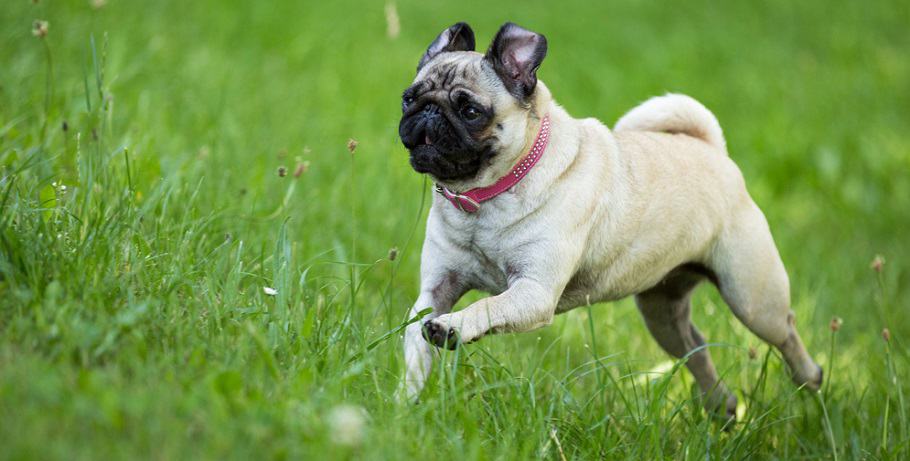
Pugs reach their adult size at the age of nine months but may continue to fill out their bodies until the age of one year. Looking at the parents is the first step to know how big your Pug will get.
Ask your breeder about the size of your Pug’s parents then you can estimate your Pug’s adult size.
Next, look at the paws of your Pug. If they are unusually big compared to their body or legs, it means that they are still growing.
Finally, you can do a DNA test to find out your puppy’s lineage. This will show you the adult size of your Pug’s relatives.
On average, Pugs weigh between 13 to 20 pounds as an adult with a height of around 10 to 14 inches.
Pug Size Chart
It is important to determine the height of your Pug because it will make it easier to buy the right dog gate, belts, and winter wear. If your Pug also participates in dog shows or competitions, it is necessary to know their height.
To determine your Pug’s height, find the highest point between their shoulders (withers) when they are standing straight.
Then, take a measuring tape and measure from the ground to the withers. This is your Pug’s height.
On average, the height of Pugs is between 10 to 14 inches.
Will Neutering/Spaying Affect My Pug’s Growth?
Spaying is a surgical procedure done on female dogs where their ovaries and uterus are removed while neutering is done to male dogs where their testes are removed. Spaying or neutering your Pug should be done between the ages of 4 and 7 months.
Spaying your Pug has certain benefits such as preventing pregnancy, reduces the risk of uterine and ovarian cancer as well as mammary cancer.
Neutering, on the other hand, prevents breeding, reduces the risk of testicular cancer and prostate disease. It also reduces aggressive behaviors and issues of marking territories.
How To Properly Weigh and Measure a Pug?
The general rule of how often you should weigh your Pug is every six months. This applies to adult dogs. If your Pug is a puppy, weighing them every month before the age of six months is recommended to ensure that they are growing appropriately.
If your Pug has any medical conditions, you should weigh them more often as certain illnesses can cause weight changes.
You need a bathroom scale to weigh your Pug at home. First, step on the scale while holding your Pug and record the number.
Secondly, weigh yourself without holding your Pug. Finally, find the difference by deducting the second weight from the first weight. This is your Pug’s weight.
What Is a Pug’s Neck Size?
Knowing the neck size of your Pug will enable you to buy them a comfortable collar and/or bandana. You can determine your Pug’s neck size at home using a soft measuring tape.
Cycle the tape around your Pug’s neck on the thickest part then put two fingers between the neck and the tape. The measurement will be your Pug’s neck size.
On average, the neck size of Pugs is between 12 and 16 inches.
Pug Body Condition Score (BCS)
A Pug’s Body Condition Score shows the level of fat they have and whether their weight is ideal or not. Body Condition Score can be measured using two scales: 1 to 5 or 1 to 9. The ideal Body Condition Score for a Pug should be 3/5 or 5/9.
This means that the waistline and the tummy tuck of your Pug are visible as well as the ribs can easily be felt by fingers because they have a thin layer of fat throughout their body. If your Pug is obese their BCS will be 9/9 or 5/9 and if they are emaciated the score will be 1/9 or 1/5.
How To Help Your Pug Lose Weight If He Is Overweight
If you have noticed that your Pug is overweight, you should take them to the vet for an examination.
This is to rule out any health issues that may be making your Pug gain excess weight. If no illnesses are affecting your Pug, you can help them lose weight through the following steps:
- Reduce the portion sizes.
- Reduce treats and snacks.
- Increase the exercise levels.
- Ensure that the food you are feeding them is high in quality and nutritious.
- Ensure that your puppy is not stressed.
Pug Body Shape Changes
There are some body shape changes that you should be on the lookout for to make sure your pug is not overweight. You should be able to easily feel your dog’s rib cage under the skin.
If you cannot, there is likely a layer of fat covering it. Healthy pugs will have a waist and some definition to their body, if there is no waist visible, your pug might be overweight.
A pug’s waist is not as obvious as other dogs, because they have a stockier build. If you see and indent on the waist, your dog should be ok.
Factors That Affect Pug Puppy Growth
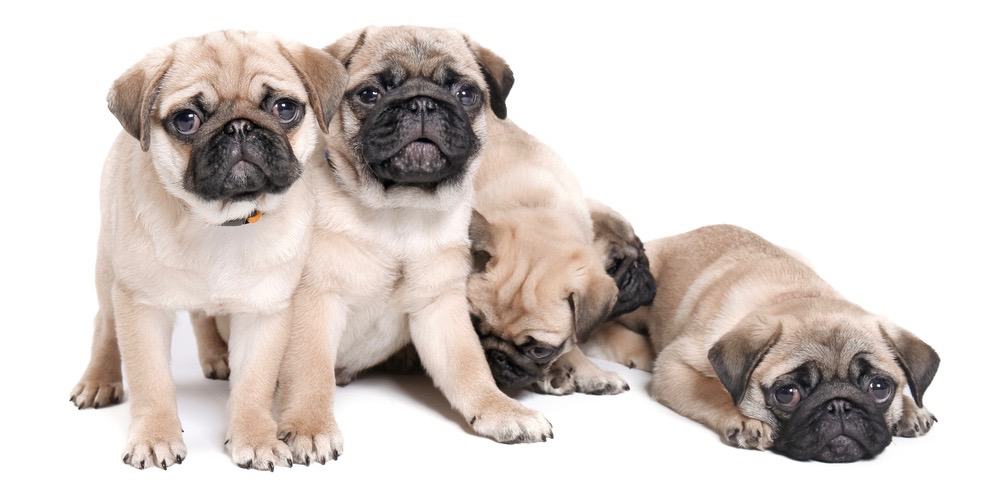
Genetics
Genetics can determine whether your pug will be taller or shorter and more prone to weight gain. Just like with humans, pugs could get a lot of exercise, but still wind up overweight.
If your dog is the runt of the litter, he will be smaller by nature. There are also some health conditions that are genetic that could affect your puppy’s growth. We go over those below, but not all pugs get them.
Nutrition
Nutrition has a huge effect over the weight of your dog. Not all dog foods are the same. Some have additives or fillers that are really not healthy for them to eat.
You should be feeding your dog more than once a day, but pay attention to the food and the quantity. For a dog, the first ingredient should be meat. Good nutrition can determine how well your pug is growing and his overall health.
Physical Activity & Health
The final factor that will affect your pug’s weight is his physical activity and health. Even though pugs are not the most energetic dogs, they still require a good amount of play and exercise to keep them healthy.
The more they move, the less they are likely to weigh. This will improve their overall health, which is important for growing puppies. Your puppy also needs to be vaccinated and kept to regular meals to stay healthy.
How Long Are Pugs Pregnant?
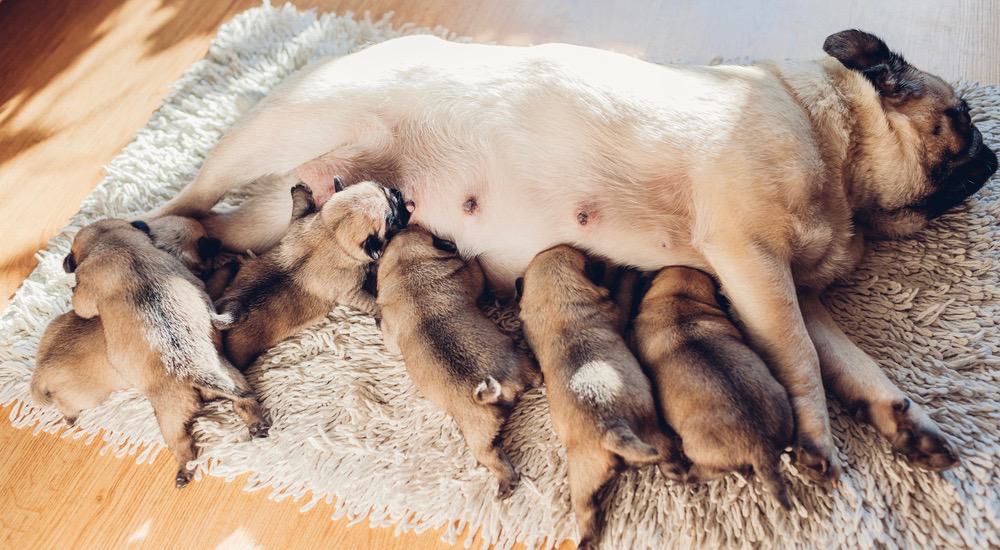
In general, a pug pregnancy should last between 60 and 65 days in total. The pregnancy should not go beyond 65 days as that becomes dangerous for both the mom and the puppies.
During pregnancy, you should take her into the vet for visits, make sure she is eating a balanced and healthy diet to keep both herself and the puppies as healthy as possible.
A pregnant pug’s appetite will come and go throughout those 9 weeks, so do not be surprised if your pug wants to eat one minute and not eat the next. She must not be alone at all during that 9th week.
How Many Puppies Do Pugs Have?
The amount of puppies that are in a litter will vary from dog to dog and pregnancy to pregnancy. For example, a dog might only have one puppy with one pregnancy, and have many with her next.
Pugs, in general, have between 4 and 6 puppies, but there are cases of pugs having up to 9, so it is unpredictable.
Some of this will be determined by the size of your pug specifically. Do you have a larger pug or a more petite pug? Larger pugs are more likely to have larger breeds than smaller pugs do, but it is also very random and hard to predict.
What If My Pug Is Not The Right Weight
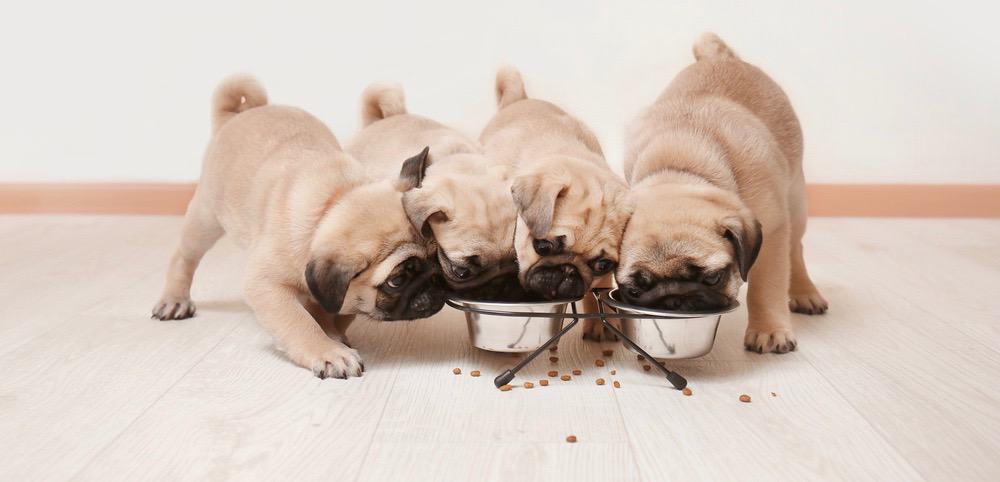
If you are concerned that your pug is not the right weight for his size, the first thing to do is to look at him with your eyes. Can you see his waist? Can you feel his ribs?
If you are worried about your dog being overweight, you can look for signs that indicate that. Otherwise, you should not be able to see ribs or bones either.
Use the pug growth chart as a guide to help you figure out whether your pug is on the right growth curve, but remember it is only a guide. Address any concerns with your pug’s veterinarian.
What Is The Life Expectancy Of Pugs?
Since pugs are a smaller breed of dog, they are likely to have a longer life expectancy than you would see with a larger breed. Pugs can live anywhere from 13 to 15 years, but the range depends a lot on how healthy your pug is and whether he has developed any health conditions that might impair his life expectancy.
Overall, as long as their weight is kept under control, pugs can live a long and happy life. They are considered in their prime between the ages of 1 and 7, after which they are considered seniors dogs.
How Much Does It Cost To Own A Pug?
Since pugs are not a large breed, they will not cost a lot in the food department, depending on the food, of course. Beyond the cost of food, a pug averages about 4 visits to the veterinarian each year.
If you think that each visit can be $50, but then there might be tests involved or medication, the cost goes up quite a bit.
Think about the cost of spaying or neutering your pug as well. The biggest costs from owning a pug will come from handling any of the genetic conditions that they are more likely to develop throughout their lives.
Pug Genetics And Common Health Problems
Like all breeds, pugs can experience genetic health issues. These include:
Eye Problems: They can get corneal ulcers, dry eye, and proptosis, which is where the eyeball is too forward in the socket. Ulcers and dry eye can be treated with medicine to help control the symptoms. Proptosis can result in the loss of an eye, so your dog really needs to be seen immediately by the vet.
Pug Dog Encephalitis: This is a terminal brain disease that only pugs get. Signs include seizures, circling, and even blindness.
Legg-Perthes Disease: This is a joint condition where the blood supply to the femur lessens and the femur begins to fall apart. Sometimes surgery can help this one.
Hemi-Vertebrae: This is a condition that especially afflicts pugs with short-noses. This is where the pug will have misshapen vertebrae. Sometimes it can affect the way a dog walks, and sometimes, it doesn’t make a difference.





